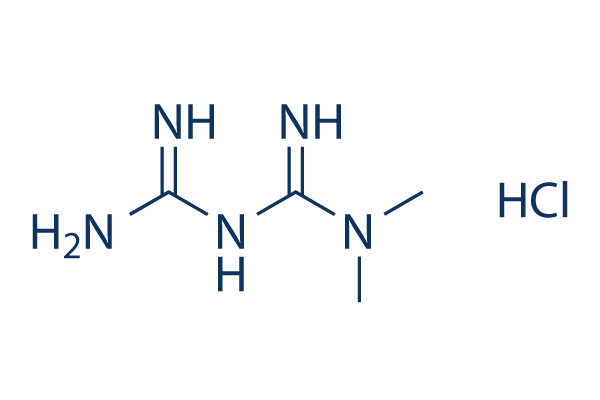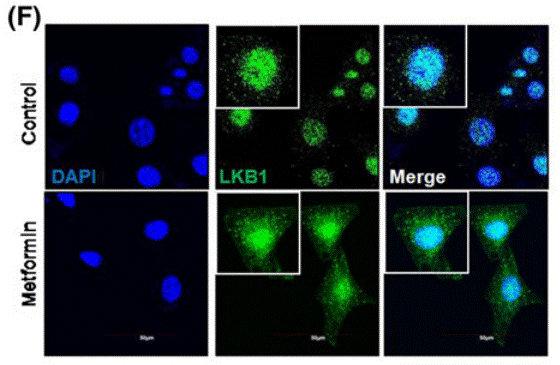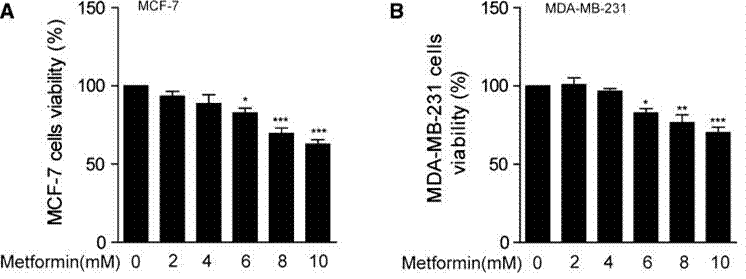
- Bioactive Compounds
- By Signaling Pathways
- PI3K/Akt/mTOR
- Epigenetics
- Methylation
- Immunology & Inflammation
- Protein Tyrosine Kinase
- Angiogenesis
- Apoptosis
- Autophagy
- ER stress & UPR
- JAK/STAT
- MAPK
- Cytoskeletal Signaling
- Cell Cycle
- TGF-beta/Smad
- DNA Damage/DNA Repair
- Compound Libraries
- Popular Compound Libraries
- Customize Library
- Clinical and FDA-approved Related
- Bioactive Compound Libraries
- Inhibitor Related
- Natural Product Related
- Metabolism Related
- Cell Death Related
- By Signaling Pathway
- By Disease
- Anti-infection and Antiviral Related
- Neuronal and Immunology Related
- Fragment and Covalent Related
- FDA-approved Drug Library
- FDA-approved & Passed Phase I Drug Library
- Preclinical/Clinical Compound Library
- Bioactive Compound Library-I
- Bioactive Compound Library-Ⅱ
- Kinase Inhibitor Library
- Express-Pick Library
- Natural Product Library
- Human Endogenous Metabolite Compound Library
- Alkaloid Compound LibraryNew
- Angiogenesis Related compound Library
- Anti-Aging Compound Library
- Anti-alzheimer Disease Compound Library
- Antibiotics compound Library
- Anti-cancer Compound Library
- Anti-cancer Compound Library-Ⅱ
- Anti-cancer Metabolism Compound Library
- Anti-Cardiovascular Disease Compound Library
- Anti-diabetic Compound Library
- Anti-infection Compound Library
- Antioxidant Compound Library
- Anti-parasitic Compound Library
- Antiviral Compound Library
- Apoptosis Compound Library
- Autophagy Compound Library
- Calcium Channel Blocker LibraryNew
- Cambridge Cancer Compound Library
- Carbohydrate Metabolism Compound LibraryNew
- Cell Cycle compound library
- CNS-Penetrant Compound Library
- Covalent Inhibitor Library
- Cytokine Inhibitor LibraryNew
- Cytoskeletal Signaling Pathway Compound Library
- DNA Damage/DNA Repair compound Library
- Drug-like Compound Library
- Endoplasmic Reticulum Stress Compound Library
- Epigenetics Compound Library
- Exosome Secretion Related Compound LibraryNew
- FDA-approved Anticancer Drug LibraryNew
- Ferroptosis Compound Library
- Flavonoid Compound Library
- Fragment Library
- Glutamine Metabolism Compound Library
- Glycolysis Compound Library
- GPCR Compound Library
- Gut Microbial Metabolite Library
- HIF-1 Signaling Pathway Compound Library
- Highly Selective Inhibitor Library
- Histone modification compound library
- HTS Library for Drug Discovery
- Human Hormone Related Compound LibraryNew
- Human Transcription Factor Compound LibraryNew
- Immunology/Inflammation Compound Library
- Inhibitor Library
- Ion Channel Ligand Library
- JAK/STAT compound library
- Lipid Metabolism Compound LibraryNew
- Macrocyclic Compound Library
- MAPK Inhibitor Library
- Medicine Food Homology Compound Library
- Metabolism Compound Library
- Methylation Compound Library
- Mouse Metabolite Compound LibraryNew
- Natural Organic Compound Library
- Neuronal Signaling Compound Library
- NF-κB Signaling Compound Library
- Nucleoside Analogue Library
- Obesity Compound Library
- Oxidative Stress Compound LibraryNew
- Plant Extract Library
- Phenotypic Screening Library
- PI3K/Akt Inhibitor Library
- Protease Inhibitor Library
- Protein-protein Interaction Inhibitor Library
- Pyroptosis Compound Library
- Small Molecule Immuno-Oncology Compound Library
- Mitochondria-Targeted Compound LibraryNew
- Stem Cell Differentiation Compound LibraryNew
- Stem Cell Signaling Compound Library
- Natural Phenol Compound LibraryNew
- Natural Terpenoid Compound LibraryNew
- TGF-beta/Smad compound library
- Traditional Chinese Medicine Library
- Tyrosine Kinase Inhibitor Library
- Ubiquitination Compound Library
-
Cherry Picking
You can personalize your library with chemicals from within Selleck's inventory. Build the right library for your research endeavors by choosing from compounds in all of our available libraries.
Please contact us at info@selleckchem.com to customize your library.
You could select:
- Antibodies
- Bioreagents
- qPCR
- 2x SYBR Green qPCR Master Mix
- 2x SYBR Green qPCR Master Mix(Low ROX)
- 2x SYBR Green qPCR Master Mix(High ROX)
- Protein Assay
- Protein A/G Magnetic Beads for IP
- Anti-Flag magnetic beads
- Anti-Flag Affinity Gel
- Anti-Myc magnetic beads
- Anti-HA magnetic beads
- Magnetic Separator
- Poly DYKDDDDK Tag Peptide lyophilized powder
- Protease Inhibitor Cocktail
- Protease Inhibitor Cocktail (EDTA-Free, 100X in DMSO)
- Phosphatase Inhibitor Cocktail (2 Tubes, 100X)
- Cell Biology
- Cell Counting Kit-8 (CCK-8)
- Animal Experiment
- Mouse Direct PCR Kit (For Genotyping)
- New Products
- Contact Us
Metformin HCl
Synonyms: 1,1-Dimethylbiguanide HCl
Metformin HCl (1,1-Dimethylbiguanide HCl) decreases hyperglycemia in hepatocytes primarily by suppressing glucose production by the liver (hepatic gluconeogenesis). Metformin promotes mitophagy in mononuclear cells. Metformin induces apoptosis of lung cancer cells through activating JNK/p38 MAPK pathway and GADD153.

Metformin HCl Chemical Structure
CAS No. 1115-70-4
Purity & Quality Control
Batch:
Purity:
99.99%
99.99
Metformin HCl Related Products
| Related Targets | hexokinase | Click to Expand |
|---|---|---|
| Related Products | 2-DG (2-Deoxy-D-glucose) Lonidamine Bromopyruvic acid (3-BP) LY2608204 1-Deoxynojirimycin Dorzagliatin 4',7-Dimethoxy-5-Hydroxyflavone Voglibose | Click to Expand |
| Related Compound Libraries | Metabolism Compound Library Anti-cancer Metabolism Compound Library Glutamine Metabolism Compound Library Carbohydrate Metabolism Compound Library Lipid Metabolism Compound Library | Click to Expand |
Cell Data
| Cell Lines | Assay Type | Concentration | Incubation Time | Formulation | Activity Description | PMID |
|---|---|---|---|---|---|---|
| human HepG2 cells | Function assay | 1 mM | 24 h | Activation of AMPK in human HepG2 cells assessed as reduction of gluconeogenesis at 1 mM after 24 hrs by enzymatic colorimetric assay | 26471090 | |
| mouse 3T3L1 cells | Function assay | 1 mM | Induction of AMPK phosphorylation in mouse 3T3L1 cells at 1 mM by Western blot analysis | 25216379 | ||
| human HepG2 cells | Function assay | 1 mM | 24 h | Reduction of glucose consumption in insulin-resistant human HepG2 cells at 1 mM after 24 hrs by glucose oxidase method in presence of 22.2 mM of glucose | 23025244 | |
| human MDA-MB-231 cells | Function assay | 1 to 20 mM | 24 h | Antiproliferative activity against human MDA-MB-231 cells at 1 to 20 mM after 24 hrs by MTT assay. | 22459208 | |
| human HepG2 cells | Function assay | 24 h | Increase in glucose consumption in insulin-resistant human HepG2 cells after 24 hrs, EC50=0.27 μM. | 21856048 | ||
| Hs575T | Function assay | 20 mM | 24 hrs | Inhibition of mTOR phosphorylation in triple-negative human Hs575T cells at 20 mM after 24 hrs by immunoblot analysis | 23490148 | |
| Hs578T | Antiinvasive assay | 20 mM | 17 hrs | Antiinvasive activity against triple-negative human Hs578T cells at 20 mM after 17 hrs by light microscopic analysis | 23490148 | |
| Hs575T | Function assay | 20 mM | 24 hrs | Activation of AMPK in triple-negative human Hs575T cells at 20 mM after 24 hrs by immunoblot analysis | 23490148 | |
| L6 | Function assay | 2 mM | 4 hrs | Increase in glucose uptake in rat L6 cells at 2 mM treated for 4 hrs post 30 mins AMPK inhibitor compound C treatment | 29128163 | |
| HepG2 | Function assay | 1 mM | 24 hrs | Induction of glucose consumption in human HepG2 cells at 1 mM incubated for 24 hrs | 28651984 | |
| Click to View More Cell Line Experimental Data | ||||||
Biological Activity
| Description | Metformin HCl (1,1-Dimethylbiguanide HCl) decreases hyperglycemia in hepatocytes primarily by suppressing glucose production by the liver (hepatic gluconeogenesis). Metformin promotes mitophagy in mononuclear cells. Metformin induces apoptosis of lung cancer cells through activating JNK/p38 MAPK pathway and GADD153. | |
|---|---|---|
| Targets |
|
| In vitro | ||||
| In vitro | Metformin (500 μM) activates AMPK in hepatocytes, as a result, acetyl-CoA carboxylase (ACC) activity is reduced, fatty acid oxidation is induced, and expression of lipogenic enzymes is suppressed. Metformin (2 mM) activates muscle AMPK and promotes glucose uptake. Metformin (500 μM) or AICAR strongly suppresses SREBP-1 mRNA expression in rat hepatocytes. Metformin ameliorates hyperglycemia without stimulating insulin secretion, promoting weight gain, or causing hypoglycemia. Metformin has beneficial effects on circulating lipids linked to increased cardiovascular risk. Metformin decreases hepatic glucose production and increases skeletal myocyte glucose uptake. [1] Metformin requires LKB1 in the liver to lower blood glucose levels. [2] Metformin (2 mM) leads to a significant increase in the activity of both α1- and α2-containing complexes in muscle cells. Metformin (2 mM) also increases threonine 172 phosphorylation in muscle cells. [3] |
|||
|---|---|---|---|---|
| Cell Research | Cell lines | Rat primary hepatocytes | ||
| Concentrations | 500 µM | |||
| Incubation Time | 1 h | |||
| Method | Cells were treated with different concentrations of metformin. |
|||
| Experimental Result Images | Methods | Biomarkers | Images | PMID |
| Western blot | p-AMPK / AMPK / p-mTOR / mTOR / p-S6K / S6K TTP / p-STAT3 / STAT3 / c-Myc pACC / ACC / pS6 / S6 pSTAT3 (Ser727) / STAT3 / Jak2 / Cdk5 / pNFκB / Bcl-2 / Bcl-XL / c-Myc |

|
24505341 | |
| Immunofluorescence | LKB1 PAR CD86 / CD206 beta-catenin / AMPK |

|
29601127 | |
| Growth inhibition assay | Cell viability |

|
26956973 | |
| In Vivo | ||
| In vivo | Metformin (100 mg/ml, po) treatment produces significant decreases in hepatic expression of mRNAs for SREBP-1, FAS, and S14 in SD rats that are consistent with effects documented in cells. Metformin also decreases hepatic lipids in obese mice. [1] Metformin (250 mg/kg, i.p.) increases AMPK phosphorylation in livers of wild-type mice. Metformin (250 mg/kg, i.p.) treatment reduces blood glucose by more than 50% in the wild-type mice on a high-fat diet. Metformin (250 mg/kg, i.p.) treatment also loweres blood glucose in the ob/ob mice by 40%. [2] |
|
|---|---|---|
| Animal Research | Animal Models | Male Sprague-Dawley rats |
| Dosages | 100 mg/300 mg | |
| Administration | o.g. | |
| NCT Number | Recruitment | Conditions | Sponsor/Collaborators | Start Date | Phases |
|---|---|---|---|---|---|
| NCT05910554 | Not yet recruiting | Sarcoidosis Pulmonary |
University of Maryland Baltimore |
May 1 2024 | Phase 2 |
| NCT06120881 | Recruiting | Type 2 Diabetes |
University of California San Francisco|National Institute of Diabetes and Digestive and Kidney Diseases (NIDDK) |
April 1 2024 | Early Phase 1 |
| NCT06147050 | Not yet recruiting | Long COVID |
Purpose Life Sciences |
April 2024 | Phase 3 |
| NCT06296836 | Not yet recruiting | Diabetes Mellitus Type 2 |
University of Illinois at Chicago|Emily Hanners|Dulal Bhaumik|Avisek Datta|Peggy Choye|Hailey Soni|Annesti Elmasri|Julie Jun|Colin Goodman |
April 1 2024 | Phase 4 |
Chemical Information & Solubility
| Molecular Weight | 165.62 | Formula | C4H11N5.HCl |
| CAS No. | 1115-70-4 | SDF | Download Metformin HCl SDF |
| Smiles | CN(C)C(=N)N=C(N)N.Cl | ||
| Storage (From the date of receipt) | |||
|
In vitro |
Water : 33 mg/mL Ethanol : Insoluble |
Molecular Weight Calculator |
|
In vivo Add solvents to the product individually and in order. |
In vivo Formulation Calculator |
||||
Preparing Stock Solutions
Molarity Calculator
In vivo Formulation Calculator (Clear solution)
Step 1: Enter information below (Recommended: An additional animal making an allowance for loss during the experiment)
mg/kg
g
μL
Step 2: Enter the in vivo formulation (This is only the calculator, not formulation. Please contact us first if there is no in vivo formulation at the solubility Section.)
% DMSO
%
% Tween 80
% ddH2O
%DMSO
%
Calculation results:
Working concentration: mg/ml;
Method for preparing DMSO master liquid: mg drug pre-dissolved in μL DMSO ( Master liquid concentration mg/mL, Please contact us first if the concentration exceeds the DMSO solubility of the batch of drug. )
Method for preparing in vivo formulation: Take μL DMSO master liquid, next addμL PEG300, mix and clarify, next addμL Tween 80, mix and clarify, next add μL ddH2O, mix and clarify.
Method for preparing in vivo formulation: Take μL DMSO master liquid, next add μL Corn oil, mix and clarify.
Note: 1. Please make sure the liquid is clear before adding the next solvent.
2. Be sure to add the solvent(s) in order. You must ensure that the solution obtained, in the previous addition, is a clear solution before proceeding to add the next solvent. Physical methods such
as vortex, ultrasound or hot water bath can be used to aid dissolving.
Tech Support
Answers to questions you may have can be found in the inhibitor handling instructions. Topics include how to prepare stock solutions, how to store inhibitors, and issues that need special attention for cell-based assays and animal experiments.
Tel: +1-832-582-8158 Ext:3
If you have any other enquiries, please leave a message.
* Indicates a Required Field
Tags: buy Metformin HCl | Metformin HCl ic50 | Metformin HCl price | Metformin HCl cost | Metformin HCl solubility dmso | Metformin HCl purchase | Metformin HCl manufacturer | Metformin HCl research buy | Metformin HCl order | Metformin HCl mouse | Metformin HCl chemical structure | Metformin HCl mw | Metformin HCl molecular weight | Metformin HCl datasheet | Metformin HCl supplier | Metformin HCl in vitro | Metformin HCl cell line | Metformin HCl concentration | Metformin HCl nmr






































